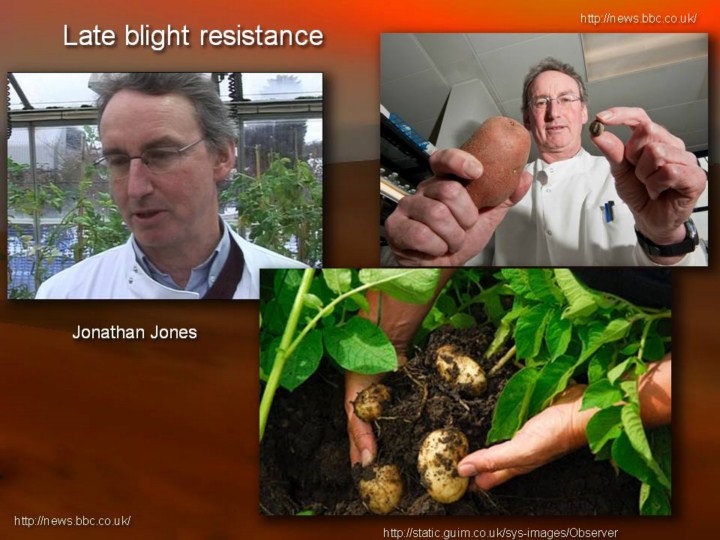| front |1 |2 |3 |4 |5 |6 |7 |8 |9 |10 |11 |12 |13 |14 |15 |16 |17 |18 |19 |20 |21 |22 |23 |24 |25 |26 |27 |28 |29 |30 |31 |32 |33 |34 |35 |36 |37 |38 |39 |40 |41 |42 |43 |44 |45 |46 |47 |48 |49 |50 |51 |52 |53 |review |
 |
A recent example is the development of potatoes resistant to Phytophthora infestans, a fungus that causes late blight. This disease caused for the Irish potato famine in the middle of the 19th century that killed a million people and drove another million to emigrate. Late blight affects potatoes all over the world, causing billions of dollars’ damage to potato crops. Using their growing understanding of plant disease resistance genes, Professor Jonathan Jones and his colleagues were able to identify, isolate and transfer a good resistance gene from a wild potato relative that makes a tiny, inedible, poisonous tuber to a favorite British variety that makes great chips, but is susceptible to the fungus. This can’t be done by conventional plant breeding. It’s simply a remarkable achievement. The knowledge of the natural protective mechanisms has made it possible to use genes instead of chemicals to protect potatoes. Right now potatoes are drenched repeatedly with fungicides to control this terrible disease. Both farmers and consumers should be delighted, shouldn’t they? …..but….
|